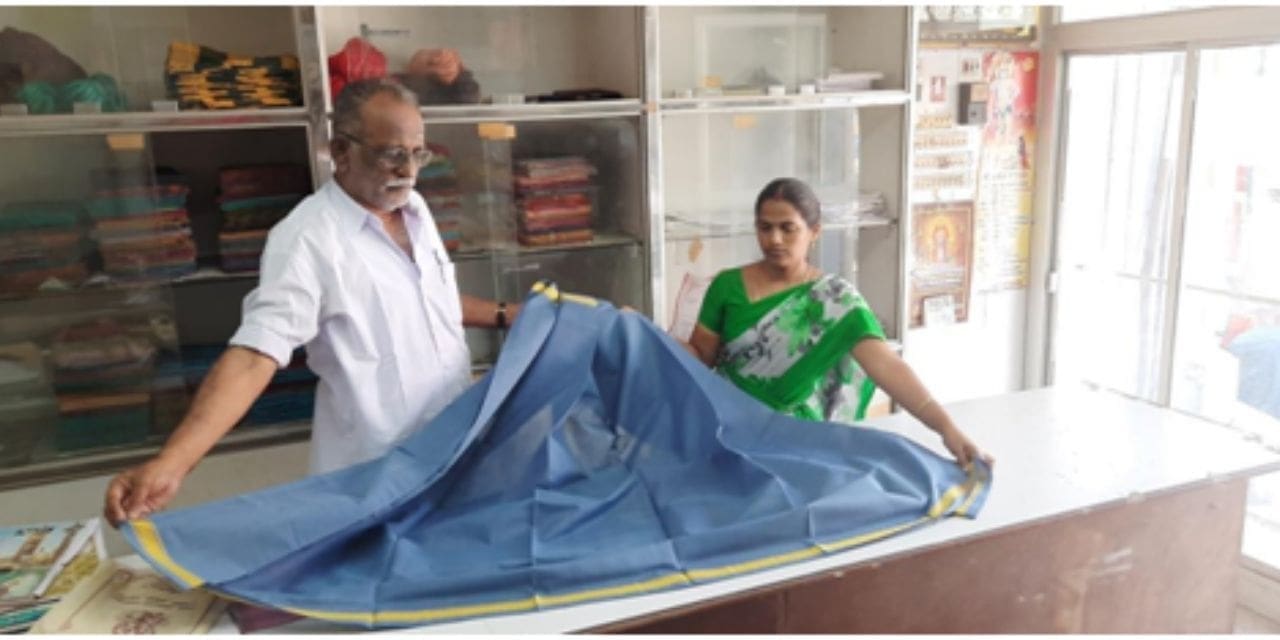Like much of the country’s textile sector, the Woraiyur cotton sari, famed for its fine texture and jewel tone colour scheme, and more recently, for its application for a Geographical Indications (GI) tag, has been affected by the skyrocketing price of cotton yarn.
“The price of a bale of cotton has gone up to ₹55,000 due to several international market factors, so even ordering two bales can set weaving societies back by over a lakh of rupees today. It is difficult to ensure a steady production flow when the raw material costs are so unpredictable, especially for those who do not maintain a stock of yarn,” A.M. Veeraiyan, manager of the showroom of the WoraiyurDevanga Handloom Weavers’ Co-operative Society, told The Hindu.
A steady decrease in the number of weavers has also added to the challenges faced by this heritage industry which is thought to have flourished since the reign of RajarajaChola. The industry body which groups members of the DevangaChettiar community, began operations in 1936, and had over 600 weavers in its fold up to the 1990s, until the advent of power looms and synthetic fibres in the Indian textile industry slowly edged out handloom weaving.
“The Cooperative has over 334 members, but we have only 50 (middle-aged) weavers working the looms. Around 80 weavers in the district, who have worked up to the age of 60, are drawing old age pensions from the government. Though the work may have come down, we are still producing saris, with direct sales of around ₹1 lakh per month,” said Mr. Veeraiyan.
The fineness and simplicity of the sari design is thought to be related to the British Raj’s use of Woraiyur’s looms to produce light cotton medical dressing fabric during the World War. In its modern avatar, the Woraiyur cotton sari is actually a composite product, with the yarn sourced through National Handloom Development Corporation in Coimbatore. “The dyeing of the yarn, rice starch application and the preparation of the warp, all of which once used to be done in Woraiyur, have now been outsourced to nearby places like Jayamkondam, Thuraiyur and so on. The main weaving is done inManamedu,” said Mr. Veeraiyan.
The cooperative is wary of e-commerce and exposure through social media. “In the past, we have had sari retailers buying our products in bulk and then selling them with a huge mark-up. A five and a half meter Woraiyur sari that we price at ₹700 is being resold for up to ₹2000. This is why we tend to avoid bulk buyers,” said Mr. Veeraiyyan. “Young people should be encouraged to join the handloom sector in order to preserve heritage weaves like Woraiyur cotton saris for posterity,” said a senior official of the Handlooms, Handicrafts, Textiles and Khadi Department.

